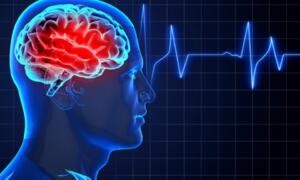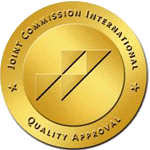Stroke Prevention

Stroke is a disease that develops as a result of an acute circulatory disorder in the brain, as a result of which brain tissue is damaged and its functioning is disrupted.
There are two main types of strokes:
- Ischemic - associated with blockage or spasms of the brain arterial vessels and causing insufficient blood supply to the area and death of nerve cells in the necrosis area and the development of cerebral infarction.
- Hemorrhagic - associated with an artery or vein rupture and hemorrhage into the brain substance or under its membranes, compressing the surrounding nervous tissue, causing the death of neurons and stimulating the development of cerebral edema.
In case of any disturbance of blood circulation in the brain, it is necessary to restore normal nutrition to its cells as quickly as possible. This will stop their further death and help avoid serious complications.
Symptoms that may indicate a stroke:
- Facial distortion - you need to ask the person to smile, puff out his cheeks, bare his teeth. A possible sign of a stroke is asymmetry of the nasolabial folds, the cheek “sails,” and the smile becomes “crooked”.
- Speech disturbances are a sign of a stroke when a person cannot pronounce words or when it seems that the person does not understand what he is saying and “confuses” words.
- Weakness in an arm or leg - if a person complains of sudden clumsiness in the arm, the inability to write anything clearly by hand.
If these signs are detected, you must urgently call an ambulance!
Risk factors for developing strokes:
- Age - stroke rates increase after age 50
- Gender - men over 40 years of age have a higher risk of developing strokes than women
- Family history and hereditary predisposition
- Smoking doubles the risk of strokes
- Psychological factors - stress, depression, fatigue
- Taking alcohol, drugs and medications - oral contraceptives
- Overweight and obesity
- Poor nutrition
- Lack of physical activity
Stroke prevention, first of all, involves adjusting your lifestyle to eliminate factors that negatively affect the body.
Prevention includes:
- Blood pressure control
Arterial hypertension is the most common cause of stroke; it causes bleeding in the brain, which leads to hemorrhagic stroke. It is very important to systematically follow the recommendations of your doctor and keep your blood pressure within normal limits.
- Cholesterol control
Cholesterol plaques can block arteries in the brain and lead to ischemic stroke. It is important to control cholesterol levels and, if they are elevated, adjust your diet.
- Blood sugar control
Elevated or persistently high blood sugar levels increase the risk of stroke by 2-3 times. First of all, eliminate fatty and sweet foods from your diet. If you have diabetes, it is important to control your sugar levels and take glucose-lowering medications in a timely manner.
- Weight control
The risk of stroke increases with excess weight, so it should be controlled. Losing weight even by 3-5 kg significantly reduces the risk of stroke. The diet should be varied with a predominance of fiber: vegetables, fruits and berries.
- Elimination of bad habits
Active and passive smoking and alcohol consumption increase the risk of stroke.
- Physical activity
Even the simplest morning exercises will have a beneficial effect on the body. Physical activity will not only help you lose extra pounds, but will also make your body stronger and more resilient. But we must understand that the load must be adequate, taking into account age and existing diseases. For older people, daily, long walks in the fresh air are enough.
Important! By knowing about preventive measures and implementing them in a timely manner, you significantly reduce the risk of developing a stroke. Take care of yourself and be healthy!



